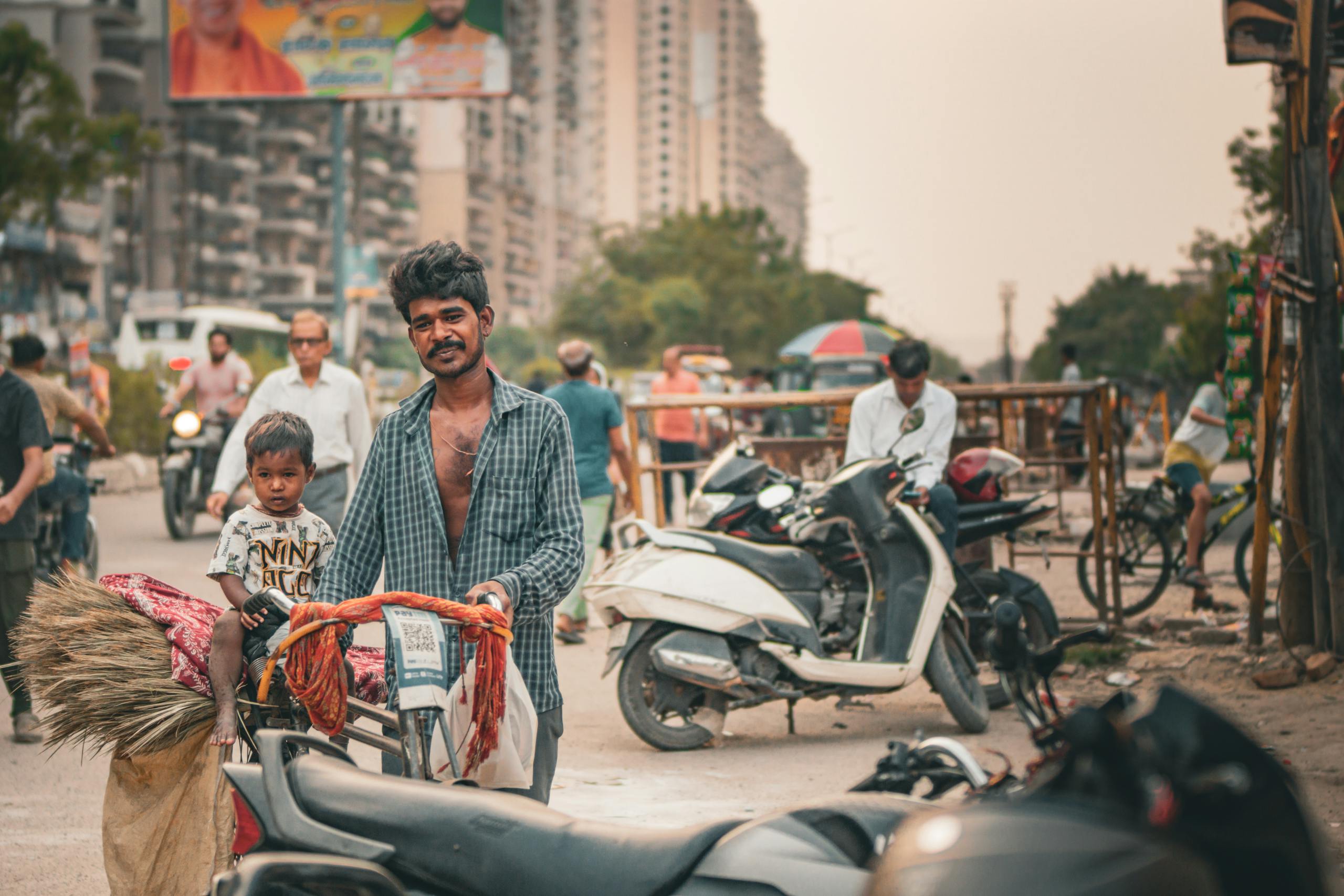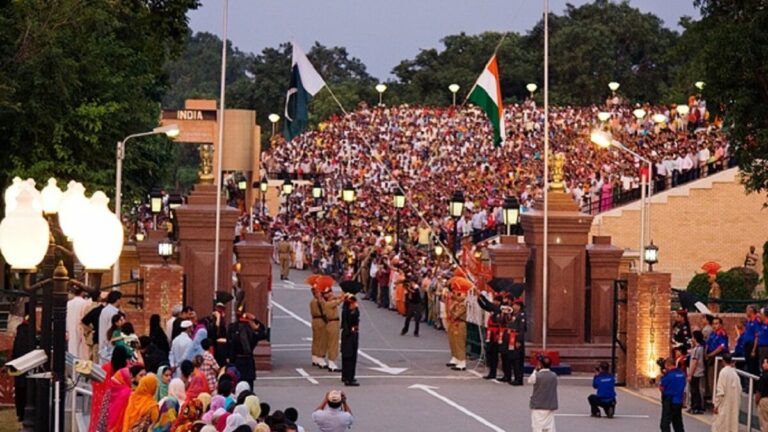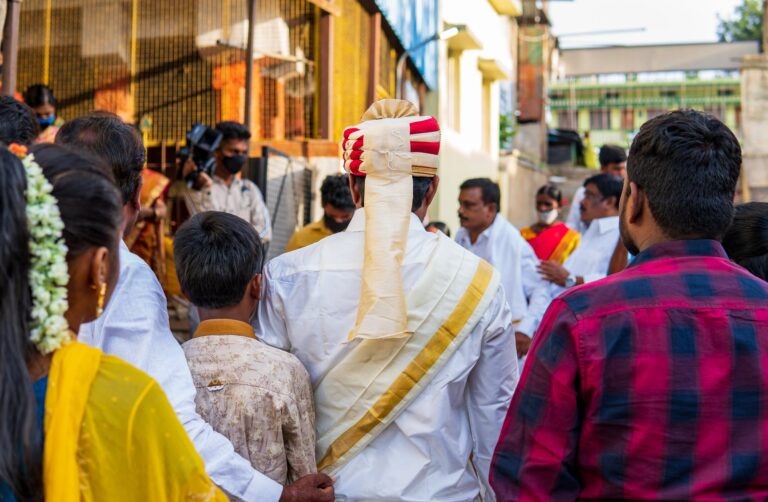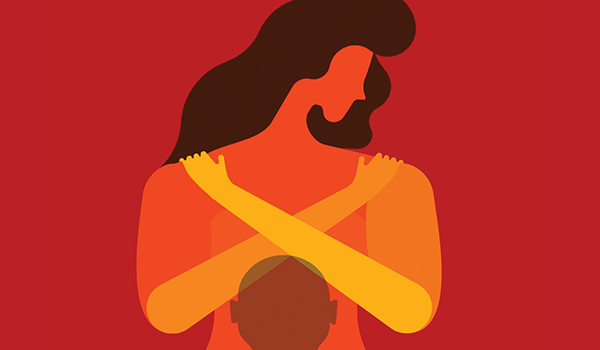India’s tryst with UBI: Struggles and contradictions

Article 38 (2) in the Directive Principles of State Policy enshrines the ideal of equitable growth by directing the state to reduce income inequality gaps by preventing the concentration of wealth in a few hands. In direct contrast to this socialist vision, India today counts itself as one of the three nations having the highest level of income inequality. Its 50-55% of national income is accumulated by the upper ten percent of the population, as reported by Oxfam (2019).
To combat this income inequality, and the consequent plagues that accompany it—poverty, malnutrition, unemployment—the Economic Survey of India (2016-17) addressed the feasibility of Universal Basic Income (UBI) being unraveled in India. While countries like Canada and Finland have already toyed with the idea of guaranteeing their citizens unconditional, universal, and regular cash benefits, experiments in India are still at their nascent stage.
It is estimated that in the coming few decades, India stands to bear the two-fold brunt of rising unemployment due to automation (McKinsey Global Institute, 2017), as well as an increasing scale of relative poverty due to the widening of the income inequality gap. In such a situation, advocates of universal basic income suggest incrementally phasing in the implementation of universal basic income at the earliest. In the words of Pranab Bardhan (2016), universal basic income (UBI) is “…the cleanest and least incentive-disruptive idea” to combat the two-pronged complication.
Akin to most policy and development measures, the idea of universal basic income is not uniformly accepted. The sceptics argue that the implementation of universal basic income would erode the debilitated social security architecture of India built over decades. Moreover, it is apprehended that a guaranteed income transfer would lead to a reduction in the labour force and encourage wasteful spending.
India is a developing nation plagued with the evils of poverty, malnutrition, and gender disparity, among others. To comprehensively understand the merits and demerits of universal basic income in combating these wicked issues, it will be a useful exercise to juxtapose the conflicting arguments concerning universal basic income.
Brief development trajectory of UBI
The idea of universal basic income has been in vogue for a long time. As early as in the year 1797, Thomas Paine, a liberalist, had proposed universal basic income as a means of fighting social evils of the society. John Stuart Mill followed suit in the year 1849 (Parijs & Vanderborght, 2017). However, it is the Scandinavian social democrats and the Silicon Valley patriots who fully developed the competencies of universal basic income.
Leaders all over the world have also publicly aired the thought of universal basic income as a tool of fighting poverty. Martin Luther King Jr., in his book “Where Do We Go From Here: Chaos or Community?” (1967), for example, said, “I’m now convinced that the simplest approach will prove to be the most effective – the solution to poverty is to abolish it directly by a now widely discussed measure: the guaranteed income.”
In Give People Money: How a Universal Basic Income Would End Poverty, Revolutionize Work, and Remake the World (2019), Annie Lowery uses examples from around the world — especially the most acclaimed GiveDirectly experiment from Kenya — to cite the revolutionary advantages of universal basic income for the developed countries which are witnessing a loss of jobs due to an automated, job-less growth. Similarly, Guy Standing (2018) considers universal basic income as a safety net against deprivation brought forth by technology.
Amartya Sen, in what would be in direct contrast to a layman’s assumption, rejects universal basic income within his Nobel-winning Capability Approach. Sen cautions that the rolling out of universal basic income at a nation-wide scale would lead to the governments shirking away from their responsibility of providing welfare to their citizens. Sen, as well as John Dréze, understand universal basic income as a goal which is futuristic in nature; as an idea whose time has not yet come (McFarland, 2017).
Economic Survey 2016-17: Recommendations and arguments
In the year 2017, to help citizens absorb the monetary shocks of demonetization, it was predicted that the government would introduce the provision of universal basic income for its yearly budget. While the prediction fell flat, UBI did find a comprehensive section devoted to it in the Economic Survey of 2016-2017. Hence, the credit for encouraging a debate on the feasibility and efficacy of implementing universal basic income in India can be attributed to the Survey.
The survey proposes universal basic income as a regular, no-work-conditionality, and individual-based cash income transfer ensured to the citizens. The Survey proposes harnessing the Jan Dhan-Aadhar-Mobile (JAM) infrastructure to provide Direct Benefit Transfers (DBT) to the bank accounts of 75% population.
In excluding the upper 25% of the population from the benefit, the Survey doesn’t adhere to the globally accepted definition of UBI, which includes the criteria of universality and un-conditionality. The Survey suggests the use of graduation and incrementalism if UBI has to be seen as a goal to achieve basic income for all, and not as a centrally-sponsored scheme. These steps entail giving priority to certain identifiable groups like widows, disabled, elderly, allowing beneficiaries to choose between cash or in-kind entitlements within the pre-existing social welfare schemes, and conducting a large-scale pilot at the urban level employing the JAM infrastructure.
The Economic Survey estimates that a sum of Rs.7,620 per annum will be successful in pushing huge swathes of the Indian population out of poverty. The income support is expected to drastically reduce poverty from 22% to a minuscule 0.5%, as per the Tendulkar poverty line. This, however, is contingent upon two factors.
First is the non-universality principle, which, as mentioned above, would translate into the upper 25% of the population not receiving the transfer. The methods suggested to prevent this stratum for accessing the benefits is through voluntary opt-outs, community sanctions, self-targeting, demographic group targeting, as well as through proxy-means tests. But the question arises, that if universal basic income is recommended to substitute welfare schemes due to misallocation and leakages to the tune of 40-65%, what is the assurance that the same challenges wouldn’t arise with the implementation of UBI as well? What is the guarantee that the upper 25% of the population will not exploit its clout to divert the benefits, as has been the case with other social security benefits like PDS?
The second factor is—as also recognized by several economists like Bardhan (2016), Joshi (2016), Ghatak (2016), Nobel-prize winner Abhijeet Banerjee (2016), as well as the Economic Survey itself—the rolling back of welfare subsidies, since an excess 4-5% GDP expenditure over and above the 9% spending on existing non-merit subsidies is not possible by any stretch of imagination. However, critics contend that a universal basic income cannot displace long-term schemes focusing on health, rural infrastructure, and education, which take a far-sighted approach for holistic human development. (Mohanty, 2019)
For all of its merits, and despite its comprehensiveness, the Survey doesn’t account for the excess cost that will be incurred in shifting to a new Direct Benefit System. The loss accrued by the state when pre-existing social security infrastructure will be dismantled and left redundant is also not taken cognizance of.
Arguments for and against UBI
The deterioration of labour welfare in the post-liberalization and de-regularization period necessitated measures to ensure financial security. Prioritizing economic reforms over socialist measures post-1991 led to a steady decline in the redistribution efforts undertaken by the government. This created a huge economic cleavage between the rich and the poor, which has further widened over the years.
Guaranteed income transfer in a regular fashion is then seen as an antidote to the corroding dignity of human beings all over the world, not just India. UBI, through its seamless end-to-end transfer mechanism, has been lately gauzed as having enormous potential to eradicate poverty, as has also been brought to light in the Economic Survey 2016-2017.
The merits of universal basic income also provide individuals with freedom of choice. Cash transfers empower individuals to demand and access what they want, instead of what the state wants from them. The policy of basic income guarantee nudges the state to forgo its paternalistic welfare attitude by entrusting its citizens to make decisions for itself and hence allows for the breaking down of power dynamics between the two.
A pilot test in Madhya Pradesh by the collaborative effort of UNICEF and Self-Employed Women’s Association (SEWA) in 2011-12 demonstrated the value of trust-building in enhancing the welfare of the citizens. The randomized control trial was performed on a total of 15,000 individuals. 6,000 participants were allocated unconditional monthly cash benefits. The study concluded that the cash transfers were spent not on wasteful consumption of alcohol or drugs, but basic household necessities. The psychological well-being of the participants improved significantly, and household debt decreased. The ill were able to procure medication timely, and the nutrition intake of the family, especially the girls, improved. A similar pilot undertaken in Delhi by UNDP and the Government of Delhi in the year 2011 demonstrated a shift to better sanitation, cleaner fuel, and consumption of non-cereals.
Moreover, as Bardhan (2016) argues, universal basic income through direct benefit transfers enhances the financial decision-making power of the women. Empirical evidence time and again has established that financial capacity in the hands of women results in higher expenditure on household commodities, thus improving the well-being of the entire family. To break away from the patriarchal systems inhibiting holistic family well-being, granting cash benefits non-discriminatorily on an individual basis, instead of allocating cash grants per household, is encouraged to harness the full potential of basic income guarantee.
India’s tryst with cash benefit transfers in the past through social security schemes has also yielded positive results. Janani Suraksha Yojana, launched in the year 2005 by the Indian National Congress, catering to pregnant women, for example, demonstrated the power of direct benefit transfers in improving the nutritional status of women, making better healthcare more accessible to them.
Economists, however, caution that unravelling universal basic income at a pan-India level will be accompanied by high levels of inflation. Moreover, if the world-stage is any indicator, large-scale experiments with universal basic income in Finland and Canada have failed and discontinued. Switzerland, in a referendum, has outrightly rejected the idea as well.
Reliance on the evidence collected through pilots conducted by SEWA, UNDP, and UNICEF for devising a nation-wide basic income policy is also subject to scrutiny. Here, authorities of randomized control trials, Esther Duflo, Michael Kremer, and Rachel Glennerster, point to a couple of problems. Firstly, the pilots did not account for the impact of UBI on government finances and the price of essential goods. Secondly, individuals behave in a certain way when they know their behaviour is being studied. The conclusions of the pilot thus may be skewed and unauthentic, and thus cannot be subjected to generalization.
Way forward
In the words of Guy Standing (2017), UBI can be hailed as a weapon against the rapid growth of neo-fascism and populism, as well as economic fragility.
Targeted government programs are extremely receptive to the policy design. Information constraints profoundly affect the programs. Thus, if universal basic income is to be implemented in India, the first step will be to strengthen the nationwide JAM infrastructure. Technology lapses, weak privacy architecture, and authentication failures of Aadhar need to be addressed beforehand.
Alternatives to UBI should not be ruled out. Swaminathan Aiyer, the editor of Economic Times, suggests one such alternative. He proposes granting thousand rupees per month to all BPL households as interest-free loans on the condition of being used exclusively for enhancing household productivity. He favours loans over free entitlements, as he believes that the latter can erode familial and work ties, even if it can aid in poverty alleviation.
Thus, the paramount question to be answered before UBI can be analyzed for applicability to the Indian context is, if UBI is to be utilized for the creation of a price floor for assessment of adequate living standards, or as a ladder for the poor to escape poverty.
References
- McKinsey Global Institute. (2017). A future that works: Automation, employment, and productivity. McKinsey&Company.
- Oxfam. (2019). Public good or private wealth? [Ebook]. Oxfam GB.
- Department of Economic Affairs. (2017). EconomicSurvey 2016-17.
- Pranab Bardhan, “Basic Income in a Poor Country,” Ideas for India, September 26, 2016, http://www.ideasforindia.in/article.aspx?article_id=1694.
- Pranab Bardhan, “Could a Basic Income Help Poor Countries?,” Project Syndicate, June 22, 2016, https://www.project-syndicate.org/commentary/developing-country-basic-income-bypranab-bardhan-2016-06.
- Maitreesh Ghatak, “The Price of Basic Income,” Indian Express, July 1, 2016, http://indianexpress.com/article/opinion/columns/basic-income-in-india-brexit-referendum-switzerlandbasic-income-jan-dhan-yojana-guarantee-employment-programme-mgnrega-2879930.
- Vijay Joshi, “Universal Basic Income for India,” Ideas for India, October 21, 2016. http://www.ideasforindia.in/article.aspx?article_id=1708.
- Abhijit Banerjee, “The Best Way to Welfare,” Indian Express, June 18, 2016, http://indianexpress.com/article/opinion/columns/swiss-votedagainst-the-idea-of-a-universal-basic-income-but-the-debate-continues-2859528.
- Parijs, P.V., & Vanderborght, Y. (2017). Basic income: A radical proposal for a free society and a sane economy. Cambridge, United States of America: Harvard University Press.
- Standing, G. (2017, January 12). Universal basic income is becoming an urgent necessity. Retrieved December 19, 2019, from https://www.theguardian.com/commentisfree/2017/jan/12/universal-basic-income-finland-uk
- McFarland, K. (2017, March 6). Amartya Sen: India not ready for a basic income. Retrieved from http://basicincome.org/news/2017/03/nobel-laureate-economist-amartya-senindia-not-ready-basic-income/.
- Lowrey, A. (2019). Give People Money. [S.L.]: Broadway Books.
- King, M., King, C., & Harding, V. (2010). Where do we go from here. Boston: Beacon Press.
- Mohanty, P. (2019). Universal Basic Income: Will it work in India?- Business News. Retrieved 24 December 2019, from https://www.businesstoday.in/opinion/columns/universal-basic-income-will-it-work-in-india/story/314686.html
Featured Image Credits: Pixy








